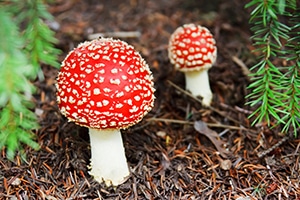 Who doesn’t love a juicy book about poison? Sure, the heyday of arsenic-wielding murderers is probably over, thanks to advances in forensic science. But it’s a ton of fun to read about the stone-cold killers of centuries past dishing out poisoned cocoa and baking MURDER CAKES for inconvenient spouses and parents. Heck, even your own hat or dress could have killed you back in Victorian times. If you’ve got a murderous mind, you’ll just die for these books about poison.
Who doesn’t love a juicy book about poison? Sure, the heyday of arsenic-wielding murderers is probably over, thanks to advances in forensic science. But it’s a ton of fun to read about the stone-cold killers of centuries past dishing out poisoned cocoa and baking MURDER CAKES for inconvenient spouses and parents. Heck, even your own hat or dress could have killed you back in Victorian times. If you’ve got a murderous mind, you’ll just die for these books about poison.
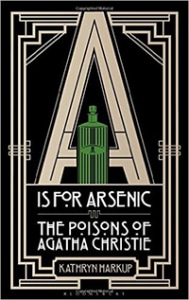 A is for Arsenic: The Poisons of Agatha Christie
A is for Arsenic: The Poisons of Agatha Christie
Author: Kathryn Harkup
The queen of mystery herself, Agatha Christie, was a big fan of bumping off her victims with poison. Trained as a pharmacist, she had an intimate knowledge of poisons, their symptoms, and how to get away with using them. This A-to-Z guide is an in-depth look at the various fatal substances used in Christie’s murder mysteries, from well-known poisons like arsenic and cyanide to some truly obscure and exotic toxins. The book is written by a research chemist, so it can be rather technical, but the frequent references to Christie’s mysteries (and discussion of why each poison would or wouldn’t have worked as described) liven up the scientific parts.
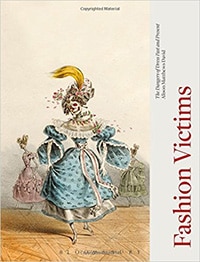 Fashion Victims: The Dangers of Dress Past and Present
Fashion Victims: The Dangers of Dress Past and Present
Author: Alison Matthews David
Fashion, poison, and murder — three of my favorite subjects combined in one book! If you think tights are a pain to put on, you won’t believe the life-threatening peril that women (and men) have put themselves through over the centuries for the sake of fashion. A woman’s bright green ball gown, or even the festive floral trimmings on her bonnet, could contain enough arsenic to kill a person. The mercury used in making hats was toxic enough to sicken the wearer, but was even more harmful to the workers who felted, shaped, and trimmed the hats, who often developed chronic pain, sores, and nerve damage from prolonged exposure. And, of course, in a time when women were expected to do everything from farming to factory work in hoop skirts and hats, fire was a constant and serious danger. And there’s so much more! The book is lavishly illustrated with fashion plates and photos of museum artifacts that bring the horrifying stories to life. A must-read for lovers of fashion history. (This also appeared in our Best Nonfiction of 2015 list.)
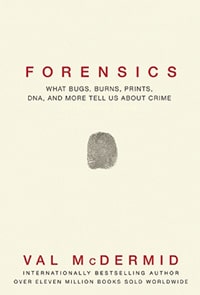 Forensics: What Bugs, Burns, Prints, DNA and More Tell Us About Crime
Forensics: What Bugs, Burns, Prints, DNA and More Tell Us About Crime
Author: Val McDermid
Enhance. Enhance. If you’ve been mesmerized by the technological wonders worked by the forensic techs on various CSI shows, you’ve probably also wondered how accurately they reflect what modern science can do. This fascinating book by an award-winning crime writer takes you on a whirlwind tour of the various forensic disciplines and how they can help solve cases. Chapters on crime scene and fire scene investigation, entomology (aka determining time of death by insect activity), pathology, toxicology, fingerprinting, blood spatter and DNA, anthropology, facial reconstruction, digital forensics, and forensic psychology (Silence of the Lambs-style profiling) break it all down for even the non-scientifically-inclined. A fascinating read for plotting your perfect crime! This also appeared on our Best Nonfiction of 2015 list.
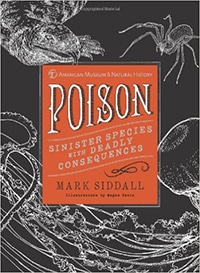 Poison: Sinister Species with Deadly Consequences
Poison: Sinister Species with Deadly Consequences
Author: Dr. Mark Siddall, Illustrator: Megan Gavin
The fauna counterpart to Wicked Plants (see below), this book is all about the poisonous and venomous members of the animal kingdom. Dr. Mark Siddall, curator of invertebrate zoology at the American Museum of Natural History, explores 75 species that will bite, sting, or otherwise poison you. Birds, bugs, fish, frogs and even the platypus are featured.
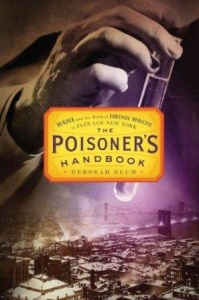 The Poisoner’s Handbook: Murder and the Birth of Forensic Medicine in Jazz Age New York
The Poisoner’s Handbook: Murder and the Birth of Forensic Medicine in Jazz Age New York
Author: Deborah Blum
The book is about the birth of modern forensic medicine, which more or less took place in Jazz Age New York. The medical examiner’s office had been a pretty corrupt and lazy department, accepting bribes to change death certificates and generally not being too ethical. Until, that is, the crime-fighting duo of chief medical examiner Charles Norris and toxicologist Alexander Gettler teamed up to kick ass and modernize the entire field of forensic medicine. They fired the deadwood, forced the police to work with them, and developed new and ever-more-sophisticated tests to detect minute amounts of then-popular poisons like chloroform and arsenic. The hour-long PBS documentary is also great fun to watch and covers most of the material in the book.
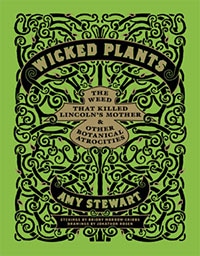 Wicked Plants: The Weed That Killed Lincoln’s Mother and Other Botanical Atrocities
Wicked Plants: The Weed That Killed Lincoln’s Mother and Other Botanical Atrocities
Author: Amy Stewart, Illustrator: Briony Morrow-Cribbs
Killer plants? Believe it. Some of nature’s deadliest poisons come from innocent-looking leaves and colorful flowers. Sometimes the dose makes the poison — like foxglove, which has been used for centuries in tiny doses to treat heart disease, but can be fatal with the smallest overdose. Sometimes the plant is dangerous because it resembles other species that are safe to eat (like poison hemlock, which has flowers like Queen Anne’s lace and roots that are mistaken for wild carrots). This grisly treasury also contains entries on exploding plants, plants that burst into flame or shoot seeds at 60 mph, and plants so viciously toxic that just touching them will leave you in excruciating agony for a year. With detailed illustrations, plenty of lore and historical tidbits, this fun little book will make you steer clear of anyone offering you a homemade herbal tea.
- Spring 2020 Book Preview - May 15, 2020
- Winter 2020 Book Preview - January 1, 2020
- Fall 2019 Book Preview - September 26, 2019

Leave A Comment